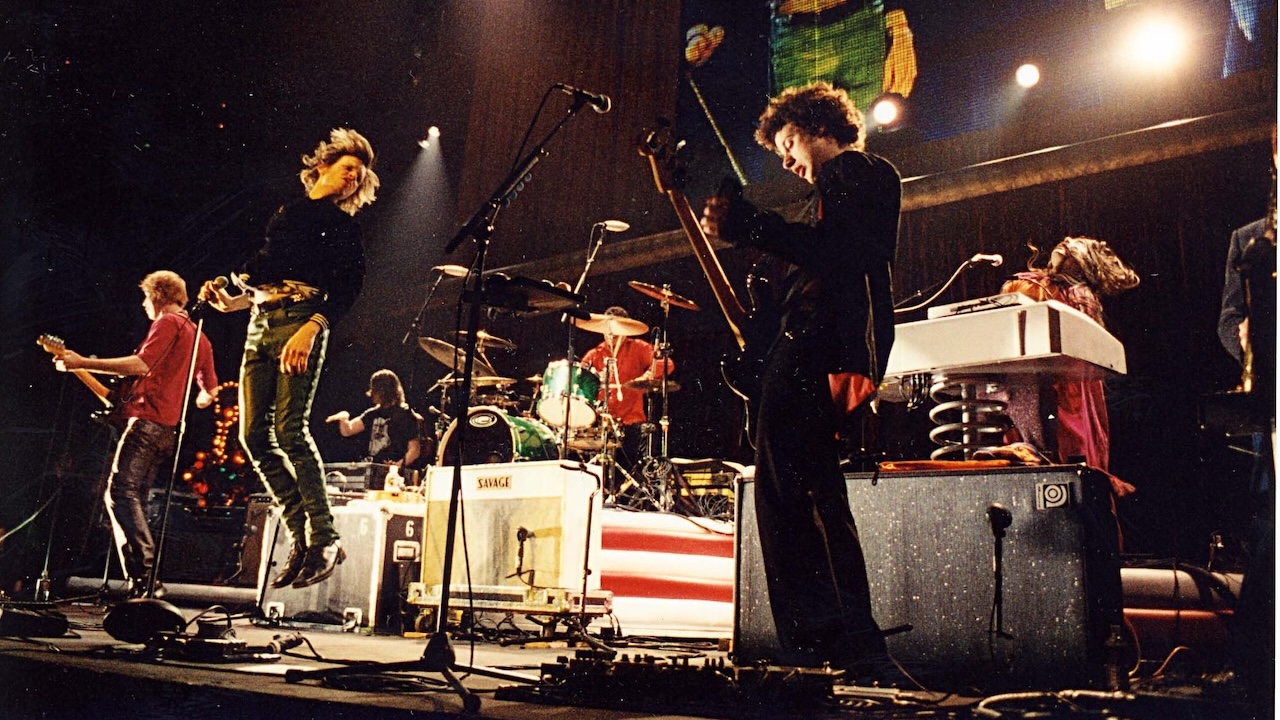“Beck wanted something distinctive and driving. Like the bass was coming unhinged at every turn”: Listen to Justin Meldal-Johnsen’s bassline on Beck’s Sexx Laws
How Justin Meldal-Johnsen anchored Beck’s postmodern pop classic by breaking all of the rules

Beck, the master of retro-hipster musical eclecticism, has been on the cultural radar for over two decades now, so it's easy to take his uniquely groovy stew for granted. But when an artist is drawing from genres as disparate as 1960s soul and R&B, '70s big-band Elvis, country, and hip-hop, it takes musicians who somehow get it all, are able to come up with parts that work every stylistic angle at once, and do it – on live gigs, anyway – while dancing.
The guy who leads that charge is Beck's bassist, musical director, and friend of over 15 years, Justin Meldal-Johnsen.
In 1999, when Beck released the high-energy Midnite Vultures, the leadoff track, Sexx Laws, became a huge hit. Amidst the jam-packed arrangement, the track's bassline stood out as a masterful example of what's possible when the rules are all being broken at once, and yet the groove is still steering the bus.
“Beck wanted something distinctive and driving. I think he wanted the bass to seem like it was coming unhinged at every turn,” Meldal-Johnsen told Bass Player. “The bass guitar was the first non-sampled instrument recorded. Beck looped the song for me, I jammed on it until I came up with parts Beck really liked, and then we tracked a few takes.”
The tune kicks off with a greasy vamp that serves as the intro and outro, verse foundation, and interlude between choruses and verses. The changes alternate between B major and G# major three times before the two-bar turnaround of A major and F# major.
Meldal-Johnsen lays into the roots with pulsing eighth-notes and an anticipated quarter-note, usually followed by a quick note run-up to the next change.
There are slight alterations to the end-bar lick throughout the tune, but the purest form of the line can be found in the first verse.
All the latest guitar news, interviews, lessons, reviews, deals and more, direct to your inbox!
One of the coolest parts of the whole bassline is the turnaround (bars 7 and 8), where Meldal-Johnsen cranks out a wild, stuttering run of 16th-notes, beat three anticipations, and approach tones that would make James Jamerson blush.
“The guys were getting some amusement at the fact that I was sweating bullets trying to correctly play this monster I had created. That's my favorite thing to do: write things that are at the threshold of my ability.”

Over A major in the verse, Meldal-Johnsen hits the root, followed by the 7th (G) and 5th (E), before sliding up into the 9th (B) and finally working his way back down the chord tones with the help of an open D string.
The coup de grace occurs over the F# chord, where he string-skips through a blinding-fast major pentatonic run of A#-C#-D#-F# and then plows down to the root, hitting the b3 blue note (A) along the way. And mind you, Meldal-Johnson plays this entire line with a pick.
“Sonically, the ideal scenario would be some sort of medium- or short-scale hollowbody with flatwounds: Get a gritty tone, and dig in fairly hard with a pick to get some attack. Have fun, but push the envelope.”
The chorus is a quirky and relentlessly major and dominant progression (there's not a single minor chord in this song!), over which Meldal-Johnsen cranks out a furious and frenetic line of 16th-note funkiness.
Using the first chorus as an example, the E7 bars climb up chromatically and then fall down on the 7th (D) and 5th (B), with hammered-on grace notes. The two following bars have a similar rhythmic feel as they hit the octave, 5th, and 7th chord tones of G# and C#.
Another two-bar climb (bars 21 and 22), this time in G, leads in to a high root-5-octave line in F#. Then a chromatic climb in E falls into a two-bar line in D before finally breathing for four consecutive quarter-notes ... and then the vamp re-enters, and the groove starts all over again.

The second verse flies off into a whole other universe, containing an alternate-picked, slightly ‘out' lick and an entirely new root-5-octave motif. Further on, after the banjo breakdown there's a fancy one-off lick in F# that sets up the final chorus and outro vamp.
By this point, Meldal-Johnsen starts playing around more with the line, but he never loses the essence of what makes it work in the first place. That includes the tone: dark and boomy, and not always completely articulated in the mix.
He did it with a '98 Guild Starfire Reissue, with the signal split into a Brent Averill API 312 mic preamp and a Tech 21 SansAmp PSA-1, and then into a Urei 1176 and “some other compressor.”


